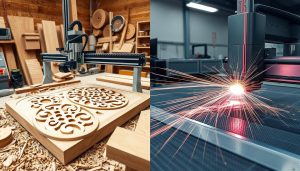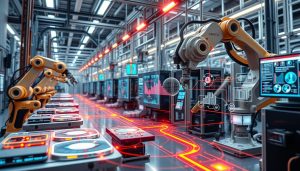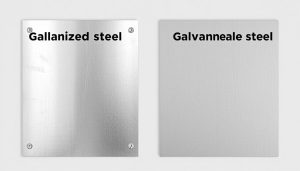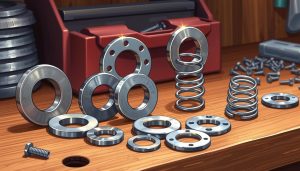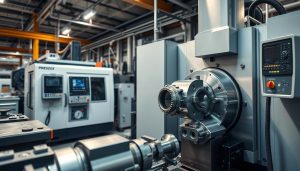In the dynamic world of modern manufacturing, one technology stands out as a game-changer: Computer Numerical Control (CNC) machining. This advanced process has revolutionized the way we produce precision parts, components, and products across a wide range of industries. From aerospace to automotive, medical devices to consumer electronics, CNC machining has become an indispensable tool in the arsenal of manufacturers seeking to achieve unparalleled accuracy, efficiency, and repeatability.
At the heart of CNC machining lies the seamless integration of computer-controlled systems and precision cutting tools. By leveraging advanced software and computer-operated machinery, this automated manufacturing process allows for the creation of intricate, custom-made parts with exceptional precision and consistency. Whether you’re a seasoned manufacturer or a newcomer to the industry, understanding the fundamentals of CNC machining is key to unlocking the full potential of this transformative technology.
What Is CNC Machining?
Computer Numerical Control (CNC) machining is a cutting-edge technology that revolutionized the manufacturing industry. At its core, CNC machining utilizes computer software to automate and control the operation of various machine tools, such as mills, lathes, and routers. This innovative approach to machining processes enables the creation of highly precise and intricate parts with remarkable efficiency and consistency.
Understanding the Basics of CNC Machining
In traditional machining, an operator manually controls the machine tools, often relying on their experience and dexterity. However, CNC technology takes this process a step further by replacing human input with a computerized system. The CNC machine is programmed with a set of instructions, known as G-code, which dictates the precise movements and actions of the tool throughout the manufacturing process.
Types of CNC Machines and Their Functions
- CNC Mills: These versatile machines are designed for milling operations, where the cutting tool removes material from a workpiece to create complex shapes and profiles.
- CNC Lathes: Specialized for turning operations, CNC lathes rotate the workpiece while the cutting tool shapes the material, producing cylindrical parts such as shafts and pulleys.
- CNC Routers: Primarily used in the woodworking and plastics industries, CNC routers utilize a rotating cutting tool to carve intricate designs and patterns into a variety of materials.
The selection of a specific CNC machine depends on the nature of the project, the desired outcome, and the materials involved. Each type of CNC machine excels at particular machining processes, allowing manufacturers to choose the most suitable tool for their needs and ensure the highest level of computer numerical control, CNC technology, and machining processes.
The CNC Machining Process
The CNC (Computer Numerical Control) machining process is a highly precise and efficient method of manufacturing parts and components. This advanced technology combines the power of computer programming with the precision of mechanical engineering to create intricate designs with exceptional accuracy.
How CNC Machines Operate
CNC machines are programmed using G-code, a specialized language that communicates the desired movements and actions to the machine. By utilizing CAD/CAM software, designers can create complex 3D models, which are then translated into machine-readable instructions. These instructions guide the machine’s movements, ensuring that the final product matches the original design specifications.
Common Materials Used in CNC Machining
CNC machining is a versatile process that can work with a wide range of materials, including metals, plastics, and composites. Some of the most commonly used materials in CNC machining include aluminum, stainless steel, titanium, and various engineering-grade polymers. The choice of material depends on the specific application, performance requirements, and aesthetic considerations of the final product.
| Material | Characteristics | Applications |
|---|---|---|
| Aluminum | Lightweight, corrosion-resistant, easy to machine | Aerospace components, automotive parts, consumer electronics |
| Stainless Steel | Durable, corrosion-resistant, high strength | Medical devices, food processing equipment, industrial machinery |
| Titanium | Lightweight, high strength-to-weight ratio, excellent corrosion resistance | Aerospace, medical implants, sports equipment |
| Engineering Plastics | Wide range of properties, cost-effective, easy to machine | Consumer products, automotive parts, electronic housings |
The versatility of CNC machining allows manufacturers to create a wide range of products, from complex aerospace components to intricate consumer goods. By leveraging the precision of G-code programming and the capabilities of CAD/CAM software, CNC machining has become an essential tool in the modern manufacturing landscape.
Benefits of CNC Machining
In the world of modern manufacturing, CNC machining stands out as a game-changer. Its ability to deliver precision and accuracy in production has made it a go-to choice for industries seeking to enhance their manufacturing efficiency and cost-effective production. Let’s delve into the key advantages that CNC machining brings to the table.
Precision and Accuracy in Manufacturing
One of the primary benefits of CNC machining is its unparalleled precision and accuracy. With computer-controlled movements and cutting tools, CNC machines can produce parts with extremely tight tolerances, ensuring consistent quality control and minimizing the need for costly rework or scrap. This level of precision is crucial in industries where even the slightest deviation can have a significant impact on the final product.
Flexibility and Versatility of CNC Technology
CNC machining also stands out for its remarkable flexibility and versatility. These advanced machines can handle a wide range of materials, from metals and plastics to composites, and can be programmed to execute a diverse array of intricate designs and complex geometries. This adaptability allows manufacturers to respond quickly to changing market demands and client specifications, making CNC machining a valuable asset in today’s fast-paced manufacturing landscape.
By leveraging the power of CNC technology, manufacturers can streamline their production processes, reduce material waste, and deliver high-quality parts that meet the most stringent requirements. As the demand for manufacturing efficiency, cost-effective production, and quality control continues to grow, the benefits of CNC machining make it an increasingly crucial component of modern manufacturing.

Key CNC Machining Techniques
In the world of manufacturing, CNC (Computer Numerical Control) machining has become an indispensable tool, offering unparalleled precision and efficiency. Among the primary CNC machining techniques are milling, turning, and drilling, each with its own unique characteristics and applications.
Milling, Turning, and Drilling: What’s the Difference?
CNC Milling is a subtractive manufacturing process that uses a rotating cutting tool to remove material from a workpiece, shaping it into the desired form. This technique excels at creating complex geometries and intricate features, making it a popular choice for parts that require high levels of detail and accuracy.
CNC Turning, on the other hand, is a process that revolves around a workpiece spinning on a lathe, with a stationary cutting tool removing material to create cylindrical or tapered shapes. This technique is particularly well-suited for producing components with rotational symmetry, such as shafts, bushings, and other axisymmetric parts.
CNC Drilling is a precision process that uses a rotating drill bit to create holes in a workpiece. This technique is often used to create features like through-holes, blind holes, and counterbores, making it an essential tool for a wide range of manufacturing applications.
Choosing the Right Technique for Your Project
When it comes to selecting the appropriate CNC machining technique for a particular project, several factors must be considered, including the part’s geometry, the desired level of precision, the material being used, and the production volume. By carefully evaluating these parameters, manufacturers can ensure that the chosen CNC machining technique maximizes efficiency, minimizes waste, and delivers the best possible results.

“CNC machining allows us to push the boundaries of what’s possible in manufacturing, delivering unparalleled precision and versatility.”
Shixinproto’s CNC Machining Solutions
At Shixinproto, we pride ourselves on our comprehensive suite of CNC machining services. From rapid prototyping to production-ready parts, our team of skilled engineers and technicians is equipped to handle a wide range of custom CNC projects. Whether you’re in need of intricate one-off designs or large-scale manufacturing runs, we have the expertise and advanced equipment to bring your ideas to life with unparalleled precision and efficiency.
Our custom CNC services span a diverse array of industries, including aerospace, automotive, medical, and beyond. We leverage the latest CNC technology to deliver exceptional results, leveraging our expertise in milling, turning, and drilling techniques to tackle even the most complex machining challenges. With a steadfast commitment to quality and customer satisfaction, Shixinproto is your trusted partner for all your CNC machining needs.
Unlock the full potential of your project with Shixinproto’s rapid prototyping capabilities. Our state-of-the-art CNC machines and robust quality assurance processes ensure that your prototypes are produced with uncompromising accuracy, allowing you to refine your designs and validate your concepts with confidence. And when it’s time to scale up, our production machining services seamlessly transition your project from the prototype stage to full-scale manufacturing, delivering high-quality parts with unparalleled consistency and reliability.
FAQ
What is CNC machining?
What are the different types of CNC machines?
- CNC Mills: For precise cutting and shaping.
- CNC Lathes: Used for creating cylindrical parts.
- CNC Routers: Ideal for cutting softer materials like wood and plastic.
- CNC Plasma Cutters: Designed for cutting conductive metals using high-temperature plasma.
How do CNC machines operate?
What materials can be used in CNC machining?
- Metals: Aluminum, steel, titanium, and more.
- Plastics: ABS, polycarbonate, PEEK, etc.
- Composites: Advanced materials for specialized applications.
What are the benefits of CNC machining?
- Precision: Extremely tight tolerances and consistent results.
- Versatility: Adaptable to diverse manufacturing needs.
- Efficiency: Faster turnaround times and reduced labor costs.
- Quality Control: Reliable and defect-free production.
What are the main CNC machining techniques?
- Milling: For creating complex 3D shapes with rotating cutting tools.
- Turning: For cylindrical parts using a rotating workpiece.
- Drilling: For creating precise holes with drill bits.
